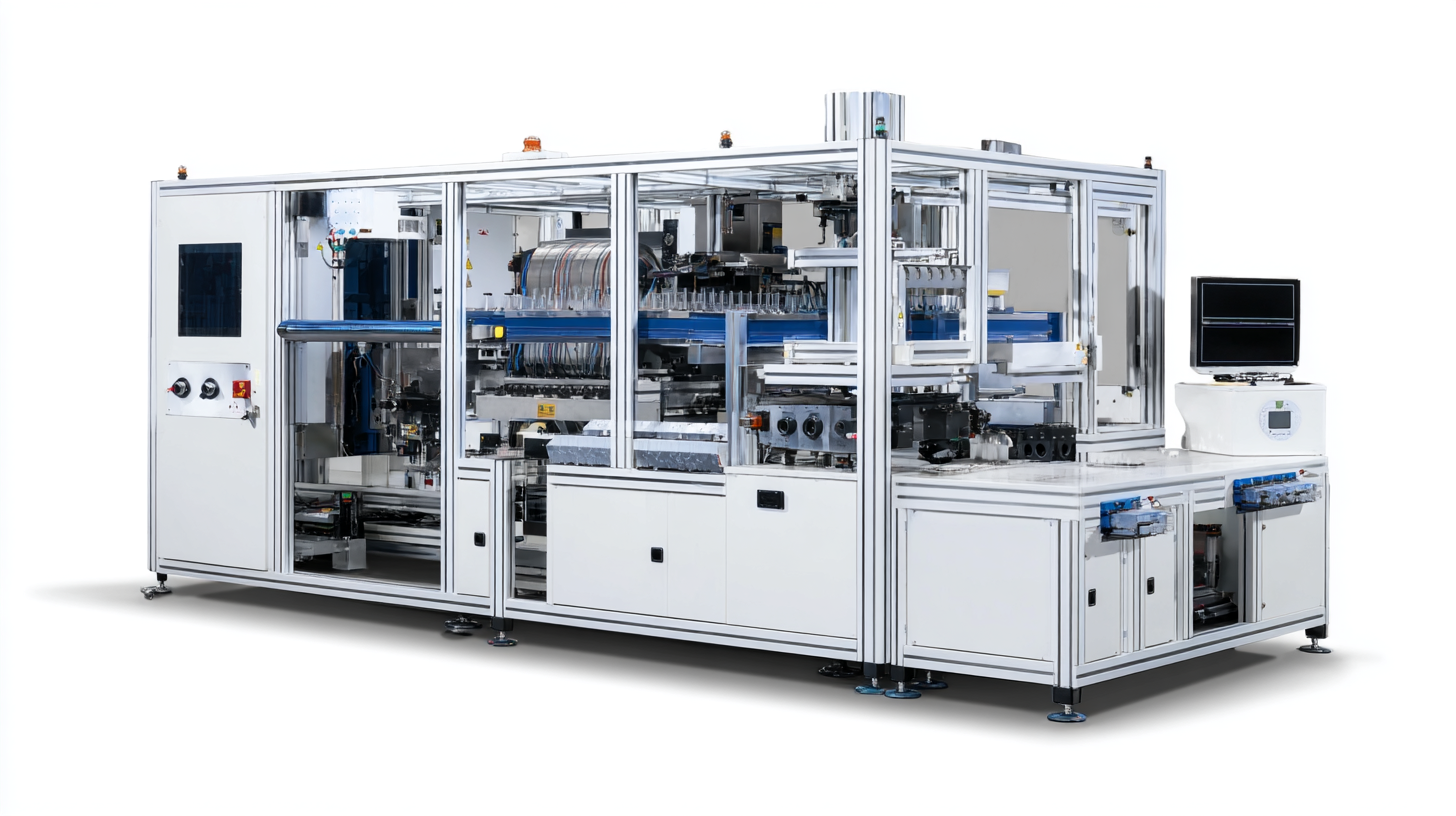Leave Your Message
As we venture into an era marked by rapid technological advancement, the focus on enhancing manufacturing processes is more critical than ever. Among the innovations making waves is the Ultrasonic Spot Welder, a tool that epitomizes efficiency and precision in joining materials. Emerging technologies are revolutionizing its capabilities, significantly impacting industries ranging from automotive to electronics.

By 2025, we anticipate that the advancements in ultrasonic welding technology will not only streamline production but also improve the quality and durability of welded joints. As manufacturers, particularly in China's top-tier manufacturing factories, embrace these advancements, the evolution of ultrasonic spot welding is set to redefine standards, ensuring that businesses remain competitive in a global marketplace. This blog delves into the innovative technologies that are shaping the future of these essential tools, highlighting their application and potential in a rapidly changing industrial landscape.
The advancements in ultrasonic spot welding (USW) techniques are reshaping the landscape of joining dissimilar materials, particularly in the aerospace and automotive industries. By leveraging ultrasonic energy, USW effectively bonds materials that traditionally present challenges, such as 3003 aluminum alloy and stainless steel. This innovative method not only ensures high-quality joints but also preserves the differing material properties, making it an ideal solution for creating lightweight yet durable components essential for modern transportation.
Recent studies have demonstrated the efficacy of USW in utilizing interlayers, such as zinc, to enhance the bonding process between magnesium and aluminum. This approach leads to the formation of a robust interfacial layer, improving the overall performance of the joint. Furthermore, the ability to join lightweight materials without introducing significant thermal stress opens new avenues in manufacturing practices, fostering sustainable designs. With the demand for more efficient and innovative joining techniques on the rise, ultrasonic spot welding is poised to become a crucial player in the evolution of production methods by 2025 and beyond.
Ultrasonic spot welding is emerging as a vital technology across various industries, owing to its efficiency and versatility in joining materials. With increasing demand for high-quality and durable connections, sectors such as automotive, electronics, and medical devices are integrating ultrasonic welding in their manufacturing processes. This technique offers several advantages, including minimal thermal impact, which is crucial when working with heat-sensitive materials, and the ability to weld complex shapes and small parts with precision.
As industries continue to evolve, the applications of ultrasonic spot welding are expanding. In the automotive sector, it is used for welding intricate components, such as battery packs and electronic assemblies, contributing to lightweight and energy-efficient vehicles. In electronics, it ensures robust connections in circuit boards and sensors, enhancing reliability. The medical device industry also benefits from this technology for assembling components that require sterile and secure connections, such as surgical instruments and implants. With its wide-ranging applications, ultrasonic spot welding is poised to play a significant role in shaping the future of manufacturing by 2025 and beyond.
The comparative analysis of ultrasonic spot welding and traditional welding methods reveals significant advantages for ultrasonic technology, particularly in sectors demanding precision and efficiency. According to a report by MarketsandMarkets, the global ultrasonic welding equipment market is projected to reach $1.42 billion by 2025, driven by its ability to produce high-quality welds without the need for additional adhesives or materials. This process employs high frequency vibrations to create localized melting, resulting in faster production cycles compared to the prolonged heating processes associated with traditional welding techniques.

Moreover, ultrasonic welding is notable for its eco-friendliness. Traditional welding methods often require significant energy consumption and generate harmful emissions due to the use of fumes and gases. In contrast, ultrasonic welding operates at lower temperatures and significantly reduces material waste, making it a more sustainable choice. A study published in the Journal of Welding Science and Technology indicated that ultrasonic welding can decrease energy consumption by up to 50%, which further enhances its appeal in industries such as automotive and electronics where both environmental and economic factors are increasingly prioritized.
As companies look to innovate and optimize their manufacturing processes by 2025, ultrasonic spot welding is poised to play a crucial role in reshaping industry standards.
The ultrasonic spot welding technology is rapidly advancing and is poised to transform the automotive and aerospace industries by 2025. Traditional resistance spot welding (RSW) has struggled with the challenges of creating robust composite joints, particularly when integrating steel or aluminum with polymers. Recent studies indicate that ultrasonic welding with thermoplastic composites, enhanced by innovative woven mesh energy directors, significantly improves joint strength and hygrothermal resistance. This advancement demonstrates a necessity for adaptation in the automotive sector, especially as the industry shifts towards lightweight materials to improve efficiency.
Moreover, the integration of digital twin technology is revolutionizing quality prediction for resistance spot welding processes. By simulating dynamic resistance behavior, manufacturers can optimize their welding operations, resulting in superior joint integrity—a critical factor in the production of electric vehicles (EVs). As demand for EVs continues to grow, driven by an estimated increase in battery production by 20% annually through 2025, investments in advanced ultrasonic technologies will be essential. These emerging trends signal a future where ultrasonic spot welding could become the standard, offering enhanced performance metrics that traditional methods cannot achieve.
| Technology | Description | Applications | Expected Impact by 2025 |
|---|---|---|---|
| Advanced Control Systems | Integration of AI for precision control of welding parameters. | Automotive, Aerospace, Electronics. | Increased efficiency and reduced defects in welding. |
| Hybrid Welding Techniques | Combination of ultrasonic welding with laser and resistance welding. | Medical devices, Electronics manufacturing. | Enhanced joint quality and flexibility in applications. |
| Materials Innovation | Development of new polymer blends and advanced coatings. | Consumer goods, Aerospace. | Improved bonding and durability of welded joints. |
| Automation and Robotics | Use of robotic arms and automated systems for welding processes. | Manufacturing, Packaging. | Higher production rates and improved safety. |
| Real-Time Monitoring | Implementation of sensors to monitor welding parameters during the process. | Industrial manufacturing, Automotive sectors. | Immediate feedback allows for adjustments, enhancing quality control. |
Implementing ultrasonic spot welding in manufacturing requires a clear understanding of both the technology and its potential advantages. According to a report by Research and Markets, the ultrasonic welding market is projected to grow at a CAGR of 5.6% through 2025, driven by increased demand for lightweight and durable materials in the automotive and electronics sectors. Manufacturers looking to adopt this technology should first assess their current production processes to identify areas that can benefit from ultrasonic spot welding, focusing on applications that require strong, precise joins without compromising the material's integrity.
Once the opportunity has been identified, the next step is to invest in the right ultrasonic welding equipment. Industry leaders suggest evaluating machines that offer adjustable frequency and power settings to accommodate various material types. Moreover, training employees on the operational nuances and benefits of ultrasonic welding can enhance productivity and quality. According to a survey by The Welding Institute, companies that invest in training experience a 20% increase in operational efficiency and a significant reduction in scrap rates, emphasizing the importance of skilled personnel in successfully implementing new technologies.

